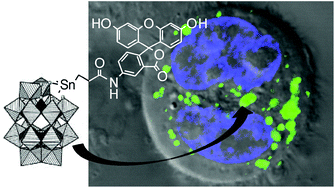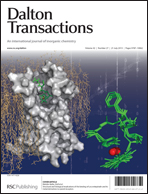Synthesis, characterization and bioimaging of fluorescent labeled polyoxometalates†
Abstract
A fluorescent labeled Wells–Dawson type POM ({P2W17O61Fluo}) was newly synthesized and characterized by a wide range of analytical methods. {P2W17O61Fluo} was functionalized with


 Please wait while we load your content...
Please wait while we load your content...